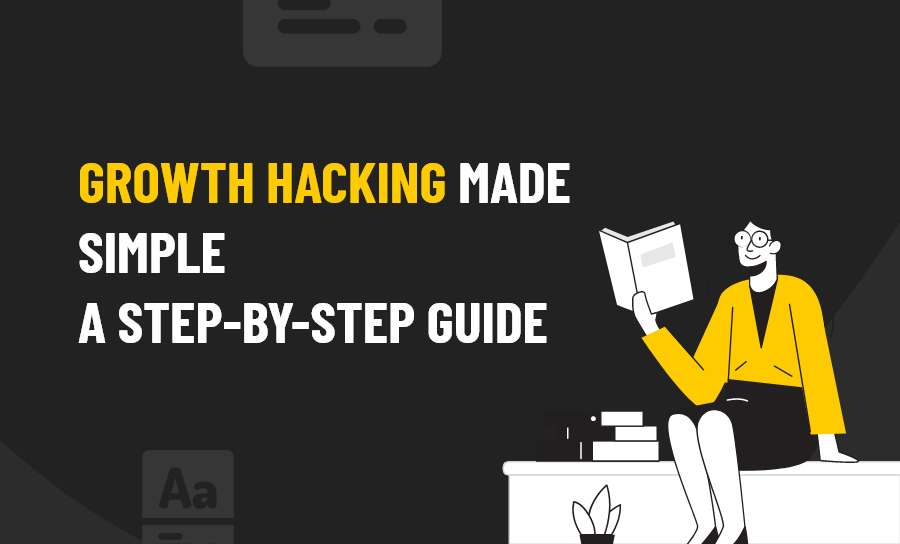What’s this first thing you think of when you hear the term hacking?
You’re probably picturing Tom Cruise suspended in the air, fingers flying over a keyboard, typing green text with no meaning to the average person on a black screen.

Photo credit: Piqsels
Your mind probably doesn’t jump to Growth Hacking, but if you’re running a startup or trying to expand your business, it is a term you absolutely need to know.
Below, you’ll find an explanation of what growth hacking is, as well as:
- A step by step guide on how to implement growth hacking strategies
- Examples of successful growth hacking
- Other tips and tricks to get your startup customer base expanding rapidly
Air suspension optional.
What is Growth Hacking?
Growth hacking (or growth hack marketing) is a term that encompasses any strategy used to rapidly grow your customer base, sales, website visits, etc.
The term was coined by Sean Ellis, founder and CEO of GrowthHackers, to “describe the sustainable growth approach used by hyper-growth companies like Facebook, Airbnb and Amazon.”
But wait? Isn’t that just marketing?
Yes… and no.
While both marketing and growth hacking focus on driving sales and getting customers, there are a few differences.
“Growth hacking is experiment-driven marketing focused primarily on how the product is used to create growth both from the distribution and retention side. The key differentiator being the product-level focus vs the channel-level focus of traditional marketing effort.”
According to Morgan Brown, COO of Inman.
So the key differentiator is the focus on the product for growth hackers.
Another difference is that most growth hackers don’t have a marketing budget, so instead of being advertising and commercial driven, they are forced to use cheap and creative methods.
Now that we know what growth hacking is, here is a step by step guide on how you can start hacking growth yourself.
Step 1: Create and test a product people want
Everyone knows to create a product. That part goes without saying.
But the important thing is to create a product people ACTUALLY WANT.
You could be the Michael Jordan of growth hackers, but if you have a crappy product that no one wants, you still won’t sell anything.
You’ll look more like 2001 Michael Jordan with the Wizards. And no one wanted that.
So when creating your product, create one that fills a need or desire that people have.
And remember to test your product, get feedback, and adjust and iterate as needed.
Step 2: If You Try To Sell To Everyone, You’ll Sell To No One
It’s one of the most important rules in business: Your target market can’t be everyone.
Therefore when creating and growth marketing your product, it is super important to have a target customer in mind.
Doing so allows you to have a product and a message that will impact a particular group of people, instead of a general one that nobody will resonate with.
Also, startups often don’t have the resources for huge marketing campaigns, so the more specific, the better.
And even the large corporations that do have the money and capability to reach everyone still have a target market.
Do you think Amazon is advertising to older people who call their grandkids for help every time they turn on a computer? (Sorry grandma)
When picturing your target customers, demographics to think about include:
- Age
- Gender
- Location
- Personality
- Education
Step 3: Become a Pirate (funneler)
Created by David McClure, AARRR is an acronym that highlights by funnel stages the most important metrics for increasing growth.

Photo credit: Flickr
It is also nicknamed Pirate Funneling (get it? Because pirates go Aaaarrrrgggghh!).
Acquisition- users come to the site from various channels.
Activation- users enjoy 1st visit: “happy user experience.”
Retention- users come back, visit multiple times.
Referral- users like the product enough to refer to others.
Revenue- users conduct some monetized behavior.

Photo credit: Flickr
Acquisition
This is all about getting as many people on your site and viewing your products as possible.
One way is through paid advertising, but there are tons of growth hacking ways that are cheaper and more creative, like blogs, social media, SEO and SEM strategies, apps, emails, and a ton more.
An example of a successful acquisition strategy was done by Hotmail.
At the end of each outgoing email sent by an existing Hotmail, the user was the tagline “Get your free email at Hotmail.”
The recipient could then click on the link and set up an account, which helped Hotmail grow from 20,000 users after one month, to 1 million users within 6 months.

Photo credit: Flickr
Activation
Ok so you have people visiting your website, now let’s keep them there.
Because 2,000 views are great and everything, but if 1,995 of them are leaving right away, are you really accomplishing anything?
What you really want is for your potential customers to spend time on your website browsing, visiting multiple pages, clicking away. Maybe even signing up for an email list or newsletter.
The obvious best way to do this is to have a good product/content.
If they like your stuff, they’ll stick around.
In addition, you can incentivize customers by giving them information or offering small services for free.
This will not only keep them on your site, but it will also allow them to see value in your product or service, enticing them to come back for more and potentially willing to pay this time for the real deal.
Having an interactive website– with blogs, podcasts, videos, links to social media and email signups- is really helpful with this.
Just think of your typical fitness and nutrition sites like V-Shred. They have articles and videos that show a couple of exercises or eating tips before offering their full workout and diet program.
The key with this, though is timing. Ask for people’s money too soon, and you scare them away. Too late, and they get bored, or you give too much away for free.
Retention
The word “growth” in “growth hacking” may make it seem like it is only about getting as many new customers as possible.
But it’s just as important, if not more important, to retain your customers and keep them coming back.
Here are some numbers, according to Invesp.
It costs five times as much to gain a new customer than to keep one around.
The probability of selling a product to an existing customer is 60%-70%, compared to only 5%-20% for a new customer.
Existing customers are also 50% more likely to try new products and spend 31% more than new customers.
It also makes sense logically.
If you have a base set of customers that are loyal, you can add new customers and expand, giving you growth.
If you only focus on getting customers but lose existing ones, you’ll find yourself in a continuous cycle of gaining and losing that makes your business look stagnant.
So the question then is how do you keep your customers?
Using tools such as newsletters, active social media accounts, sales and special offers, loyalty/rewards programs, and emails can all help.
Who knew your inbox flooded with promotional emails had a purpose?
Referral
In other words, get your customers to do the growth hacking for you.
Get them to tell their friends, family, neighbors, pets, the weird uncle they only see once a year at the family Christmas gathering… everyone.
If your product is good enough, hopefully, they’ll be doing this on their own.
Or sometimes it will happen naturally.
“Hey, where’d you get that food?”
“I ordered it on DoorDash.”
But it can’t hurt to push them in the right direction.
For example, Dropbox offered free storage to people who successfully got their friends to sign up.

Photo credit: Dropbox
This works best with scalable businesses, meaning a company that can grow without being hampered by its structure or available resources when faced with increased production.
Other ways to do this are to offer discounts, loyalty rewards, or bonus features for referrals.
Revenue
This is it! This is why you’re here: TO MAKE MONEY!
If you have a great product/service/content, and you executed the previous steps correctly, this is where you start raking in the dough.
There are a few obstacles to keep in mind, though.
I know, it’s never as easy as it sounds.
According to SaleCycle, 79.17% of people abandon their cart, meaning they have put items into their digital shopping cart, but leave the site and don’t complete the purchase.

Photo credit: Wikimedia Commons
Sometimes it may be because people were just browsing, comparing prices, or they simply forgot.
Those are going to happen. But there are reasons for cart abandonment that can be addressed, mainly:
- Unexpected or high shipping costs
- Don’t want to create an account for checkout
- Technical issues
- Complicated checkout process
- Lack of trust
- Price is too high
Of course, there are solutions to the above. You could
- Send “items in your cart” email reminders
- Create a guest checkout
- Sales on shipping (i.e. free shipping on orders over X amount)
- Have a variety of payment options
- Create a simple checkout process
- Smooth out technical issues
With any of these problems, it will be helpful to use A/B testing or surveys to get feedback and to find the right solutions.
Step 4: Find What Works Best For You
Acronyms are great and all, but they’re very vague.
AARRR is a helpful guide and outline, but that’s all it is.
It’s up to you to find creative solutions and ways to get your product out there and grow your customer base.
Remember, this isn’t traditional marketing with cookie-cutter processes. It’s about the product. So your growth hacking techniques should be as unique as your product is.
Start by looking at some of the more successful examples of growth hacking, and emulate them in a way that fits your business.
For example, YouTub in 2005 used MySpace as a means to share their videos and to gain access to their 25 million users at the time.
Now, I wouldn’t recommend partnering with MySpace today. I’m sure some of you have never even heard of it.
But the idea of partnering with an already established company to gain access to their customers is a great way to expand your own business.
Other techniques try include:
- Write blogs
- Start a podcast
- Make social media accounts
- Get influencers to review your products
But remember, be creative with these and mould them to your product. And don’t be afraid to try new things and come up with your own techniques. In other words, have fun with it!
Step 5: Consult an Expert
There are a lot of growth hacking strategies you can implement on your own, but it is always best to talk to an expert that offers growth hacking services.
Pear Lemon Convert has experts waiting to talk to you about your business and ready to help you fully optimize your growth potential! For their growth hacking services, book a call today!
Bonus!
For additional growth hacking strategies, check out Pearl Lemon’s Growth Hacking Tactics Every Startup Needs To Know. You can also check out the Pearl Lemon Convert blog that has tons of articles about growth hacking, customer conversion, and more!








